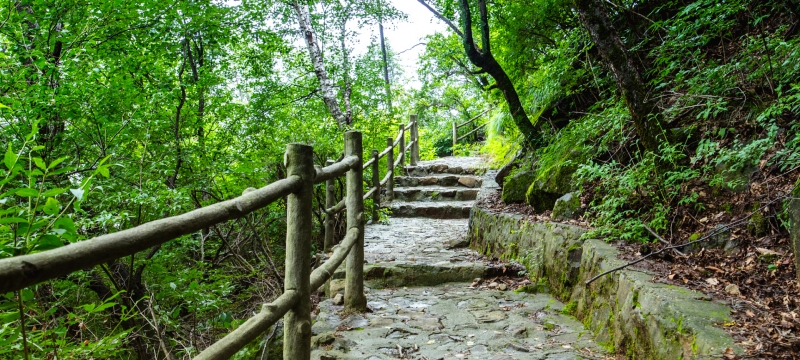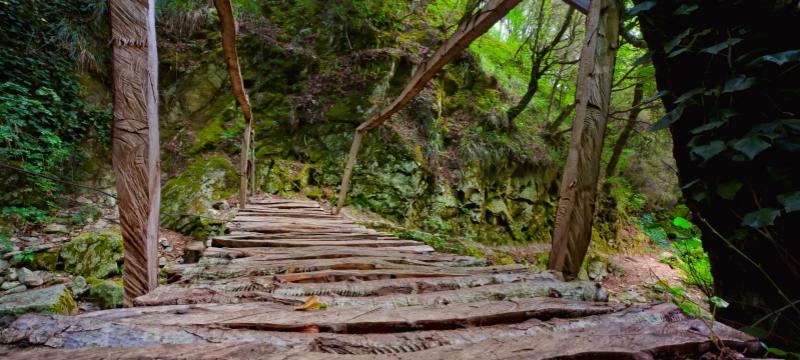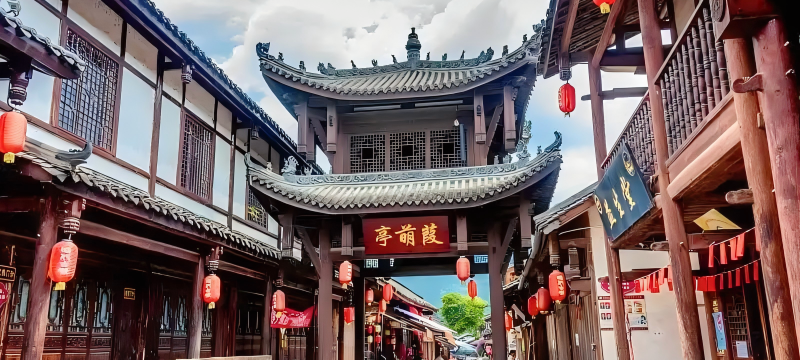





Jinniu Ancient Road
Winding through Sichuan’s verdant mountains, this 2,000-year-old trail was a vital Silk Road link between Shaanxi and Sichuan. Once echoing with traders’ caravans and soldiers’ marches, today it’s a scenic trek through history, dotted with ancient inns, stone bridges, and legends of the "Golden Bull" that paved the way.
1. Attraction Introduction
Jinniu Ancient Road (金牛古道), also known as the "Golden Ox Trail," is one of China’s oldest and most historically significant mountain roads, dating back over 2,300 years to the Warring States Period (475–221 BCE). Stretching 600+ km from Hanzhong (Shaanxi) to Chengdu (Sichuan), it was a vital trade and military route, famously used by Zhuge Liang during the Three Kingdoms era. Today, the best-preserved section is in Guangyuan (剑门关段), featuring stone-paved paths, ancient cypress trees (planted 1,700 years ago), and cliffside inscriptions.
2. Historical Significance
The Jinniu Ancient Road is an ancient trade and pilgrimage route that dates back to the Tang Dynasty (618–907 AD). It connects the Sichuan Basin with the Tibetan Plateau, passing through mountainous regions and gorges, offering a glimpse into the historical exchanges between the Tibetan, Qiang, and Han cultures. The road was historically used for trade, military movements, and religious pilgrimages, linking Chengdu and Lhasa, two important cities in ancient China.
The name "Jinniu" translates to "Golden Bull", a reference to a legendary bull that was said to have been able to carry gold along this road, symbolizing the importance of trade and prosperity for the region. The route gained significance due to its role in the transportation of silk, spices, tea, and other goods, as well as its use by Buddhist monks traveling between Tibet and the Sichuan Basin.
Over time, however, the Jinniu Ancient Road became less used due to natural barriers and the development of newer transportation routes. Despite this, the road remains an important historical site, preserving traces of ancient stone bridges, temples, and cultural relics that reflect the region’s rich history.
In recent years, the Jinniu Ancient Road has gained attention from tourists and historians, especially those interested in exploring ancient trade routes and experiencing mountainous landscapes..
3. Key Sections
Jianmen Pass (剑门关): Most dramatic cliffside segment (near Qianfo Cliff).
Cuiyun Corridor (翠云廊): 10km path lined with 10,000 ancient cypresses.
Zhaohua Ancient Town (昭化古城): Well-preserved Ming-Qing驿站 (post station).
4. Recommended Route
1-Day Hike (Guangyuan Section):
Start at Jianmen Gate (剑门关北门) → Hike 5km along stone road (2–3 hrs).
Pass "Bird’s Path" (鸟道) cliff walkway → Explore Cuiyun Corridor.
End at Zhaohua Town (taxi back to Jianmen, 30 mins, ~50RMB).
5. Best Time to Visit
Best: April–May (spring greenery) & October–November (autumn foliage).
Avoid: July–August (heavy rain makes trails slippery).
6. Transportation
Location: the Jinniu Ancient Road passes through the Sichuan Basin, connecting Chengdu and the Tibetan Plateau, with key points in Qingchuan County, Wenchuan County, and Ya'an in Sichuan Province, China.
From Chengdu:
High-Speed Train → Guangyuan (1.5 hrs, 110RMB) → Taxi to Jianmen Pass (40 mins, 120RMB).
Bus from Chengdu North Station → Jianmen (3.5 hrs, 80RMB).
7. Tickets & Fees
Jianmen Pass Entrance: 105RMB (includes Cuiyun Corridor).
Zhaohua Ancient Town: 60RMB.
Optional:
Cable Car at Jianmen: 50RMB (one-way).
Guided Hike: 300RMB (4-hr tour, max 6 people).
8. Important Notes
Footwear: Wear sturdy hiking shoes (ancient stones are uneven).
Hidden Gem: Look for Three Kingdoms-era stone carvings along the trail.
Food: Try Jianmen Tofu Banquet (剑门豆腐宴, ~80RMB/person) in nearby villages.
Combine With: Visit Qianfo Cliff (30 mins drive away) for a full historical day.
Pro Tip: Start early (7–8 AM) to avoid crowds and misty morning views! For history buffs, hire a guide to decode the road’s military significance.
